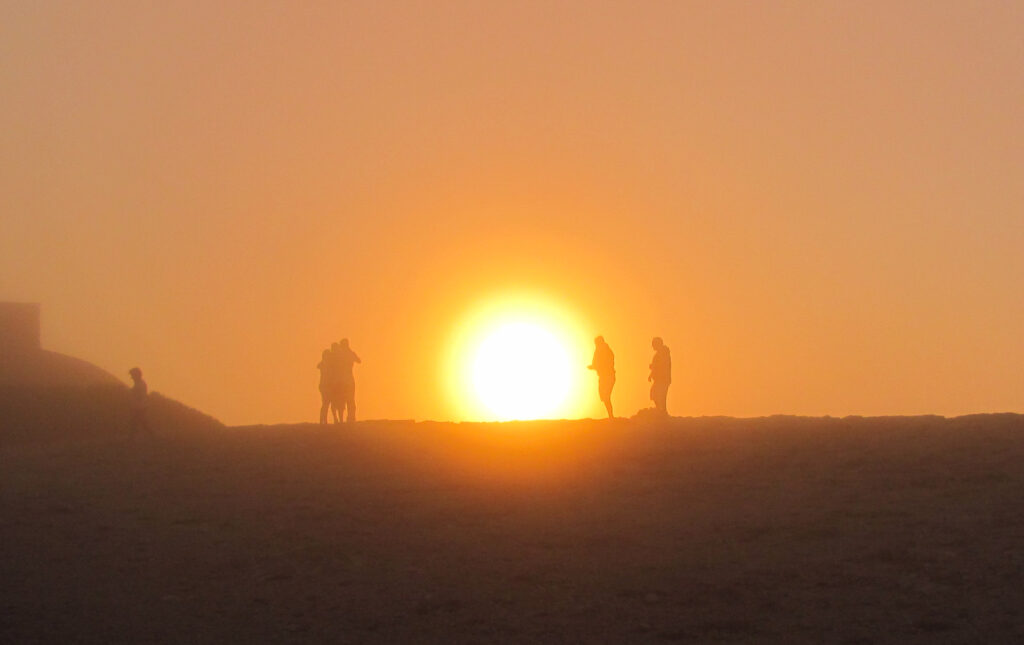We’re biological animals. Light is daytime and activity; dark is night-time and rest. However, since the age of artificial light, be it from an open fire in a cave, a candle through the ages or electrical light, we’ve attempted to counter that. Then there are the grey areas. Lightning blasts light through the darkest night. Moonlight and starlight soften the depth of darkness. Eclipses, thick fog and storms obscure daylight.
For writers, light, its moods and its changes are gifts without end. Like weather, light can reflect a character’s mood and sometimes their actions and reactions. Nothing like a set-in rainstorm to depress even the most optimistic heroine. Rain dripping off her hair and down inside her collar, she might just pull her raincoat tighter and think to herself: “You know what? I’ll just leave it and go home for a nice hot cup of tea.“
If it was a sunny day with a light breeze brushing her skin, she’d feel so much more enthusiastic about sorting out the world. Conversely, if your heroine is unhappy and the sun in beaming down, it can sometimes have even greater effect because of the contrast.
But light and dark aren’t only about the weather. In the Stone Age, dark meant danger. Wolves, big cats with even bigger teeth, bears, other humans, all stalked even the nicest cave people and in the dark they couldn’t be seen until they attacked you. And the consequences were often terminal.
 We still have that memory in our genes and instinctively feel uncomfortable in the dark. Being shut in a dark cellar, trapped in a lightless tunnel, walking through an unknown area with no streetlights can be stuff of nightmares.
We still have that memory in our genes and instinctively feel uncomfortable in the dark. Being shut in a dark cellar, trapped in a lightless tunnel, walking through an unknown area with no streetlights can be stuff of nightmares.
But a gift for a writer.
We can subject our hero or heroine to all kinds of unpleasant incidents this way and express his/her fears and anticipations. A dark corner or unlit cul-de-sac is perfect. Even worse are the dark corners of the mind – the area we fear most, apart from final oblivion.
But the dark can help our characters hide or conceal things or even people. Shadows are extremely useful. What wartime story would be authentic without covert action in the dark after curfew?
In a lighter-hearted vein, blue sky, a brightly-lit room or the sun rising again at dawn are reassuring and life-affirming. Light shows up hidden corners and a torch can illuminate clues or a path to a solution. Another aspect is when light can create patterns that intrigue, even enchant especially when reflected. Of course, it also shows up smears on windows and dust on surfaces.
But like darkness, light can have its (excuse the pun) darker side. Remember the film ‘Ice Cold in Alex’ where the struggle was, amongst other things, the intense light of the desert?
The same can be true for snow and ice wildernesses where snow blindness can incapacitate the characters. Often, ‘bad guys’ use a light in the face of their captive to intimidate them.
The sudden switch from light to dark or vice-versa can cause a visceral emotional reaction – fear, relief, disorientation – as a character is released from a dark cellar into blazing sunlight or is plunged into Stygian blackness by accident or design. How often have we seen in a film or read about the scene where the characters are plunged into darkness in a railway tunnel? The Lady Vanishes is a perfect example.
In ancient times during a total eclipse in the daytime, many people thought the darkness signified the end of the world. I’ve just written a scene like that in AD 393. Educated Romans knew about eclipses, but even so, they still shivered like everybody else when the sun was blotted out at noon.
When you have a scene where you need to express joy, bring relief to intensity, or need to bring in fear and menace, light and dark can considerably enhance the atmosphere as well as play a crucial part to the story itself.
Alison Morton is the author of Roma Nova thrillers – INCEPTIO, CARINA (novella), PERFIDITAS, SUCCESSIO, AURELIA, NEXUS (novella), INSURRECTIO and RETALIO, and ROMA NOVA EXTRA, a collection of short stories. Audiobooks are available for four of the series.Double Identity, a contemporary conspiracy, starts a new series of thrillers. JULIA PRIMA, a new Roma Nova story set in the late 4th century, is now out.
Find out more about Roma Nova, its origins, stories and heroines and taste world the latest contemporary thriller Double Identity… Download ‘Welcome to Alison Morton’s Thriller Worlds’, a FREE eBook, as a thank you gift when you sign up to Alison’s monthly email update. You’ll also be among the first to know about news and book progress before everybody else, and take part in giveaways.
















Leave a Reply